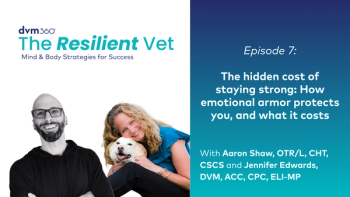
Change is good (really)
Whether adding staff or services, veterinary hospitals commonly have a hard time accepting change.
Whether adding staff or services, veterinary hospitals commonly have a hard time accepting change.
The book, "Who Moved My Cheese" (Spencer Johnson, Ph.D.), should be required reading of all veterinary hospitals, doctors and staff.
John Cotter in "Leading Change," comments that "more organizations fail from failure to change rather than making the wrong change."
What can we do to make change less scary? Lets take a look at the changes needed to introduce a new service.
ASK for help!! Select the service and seek the teams input: Identify the service you have in mind and discuss it with the team. When starting a new service you can tell your team what they will do or you can ask them what they think. Seeking the input of your para-professionals will enhance the buy-in and, more importantly, make the team active participants.
So, if you want to introduce senior care programs, discuss the hoped-for outcome with your team and get their input.
Cheerleader: Find a champion on your team for the program or service. Then, have them lead your team in the development of the program.
Introducing a new service is a multiple-step process. Having identified the outcome, it is time to define the process to get there. What does the service entail and do you have the needed resources? What pet population are you trying to contact? Do you need equipment? Marketing pieces for internal use? How are you going to price it? In a senior program, you might need handouts, a well defined lab profile, a specific client release handout, scripts for use on the phone, in the exam room.
Training, Training and More Training. Before your clients learn about your new service, your staff has to have a complete and thorough understanding of what the program is. Staff meetings specifically dedicated to the service and led by para-professionals will further enhance buy-in. Role playing telephone calls, client interactions and exam room discussions are mandatory. Trouble-shooting and anticipating questions and problems is done at this point.
Out of the Box. You have team buy-in. You have a well- defined program. You have troubleshot all the pros and cons. You have a goal for the team to shoot for and reward for attaining such goal. What next? Let the cat out of the bag. Use the marketing pieces you developed, focus on your existing client base, and more specifically, focus on your top clients. Using the mail, e-mail, faxes, or phone calls, bombard your clients with information about the service that you are now providing and how much their pet needs this service. Posters in the exam rooms, notes on the bottom of invoices, newsletter articles, and other educational pieces are a must. Telephone scripts for every call, exam room scripts for each visit, and in-house flyers for each walk-in are used.
Review and Revamp. No program introduction is perfect. What worked? What didnt work? What needs to be changed? Did you achieve the goal? Was it easily attainable? Programs or services must be reviewed on a regular basis for their success.
The success in introducing a new service or program comes from the same teamwork that makes any practice successful. Communication among the team and between the team and the clients is imperative. Knowing your desired outcomes will provide vision. But to really make it work requires every team member become an actor. They must believe in the service. They must believe in the pets need for the service. They must be an actor when presenting the service to the client by making the service theirs and the outcome Academy Award-winning.
Newsletter
From exam room tips to practice management insights, get trusted veterinary news delivered straight to your inbox—subscribe to dvm360.




